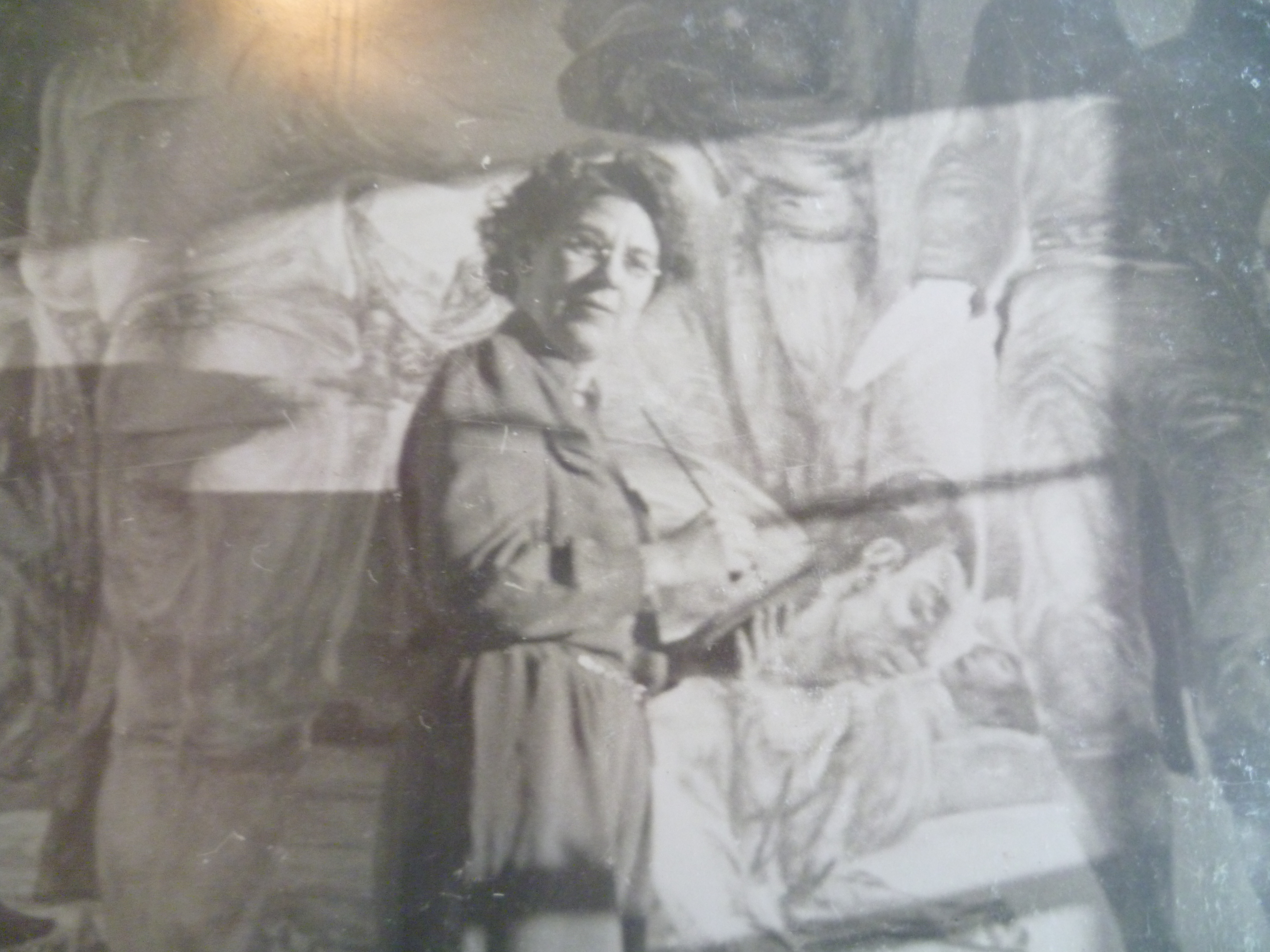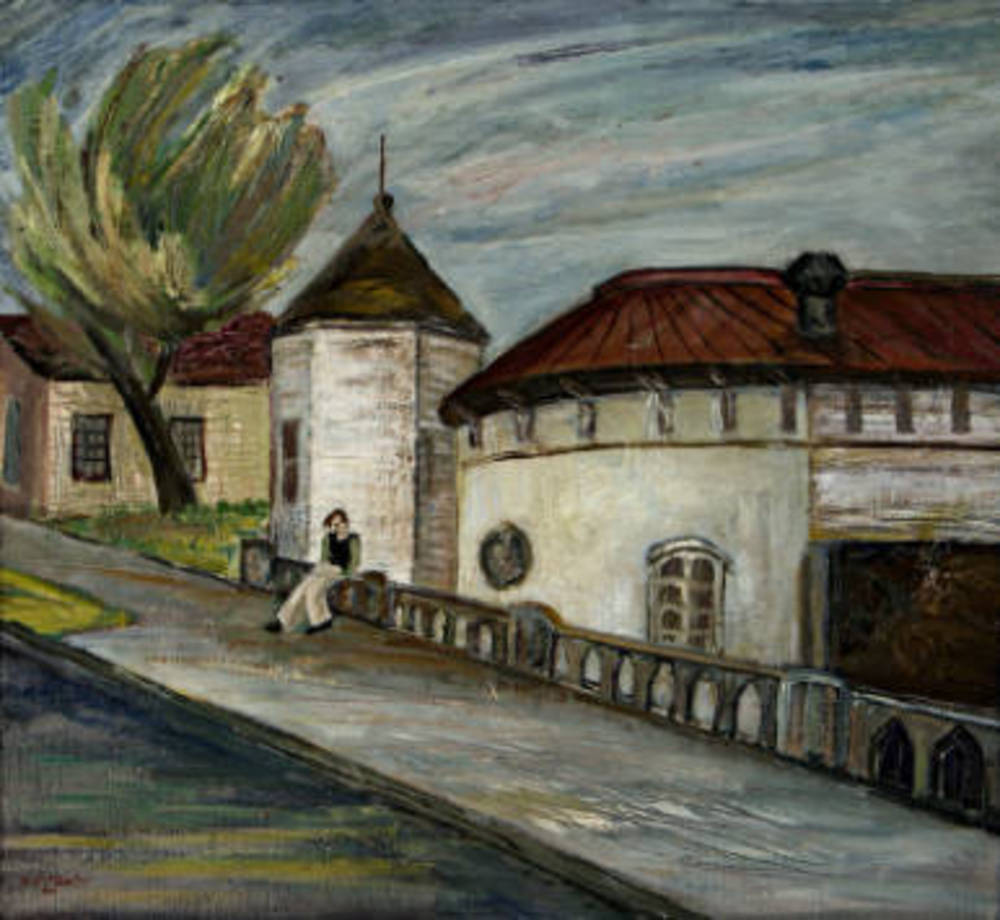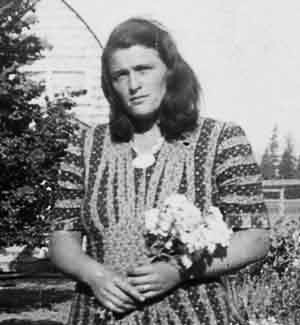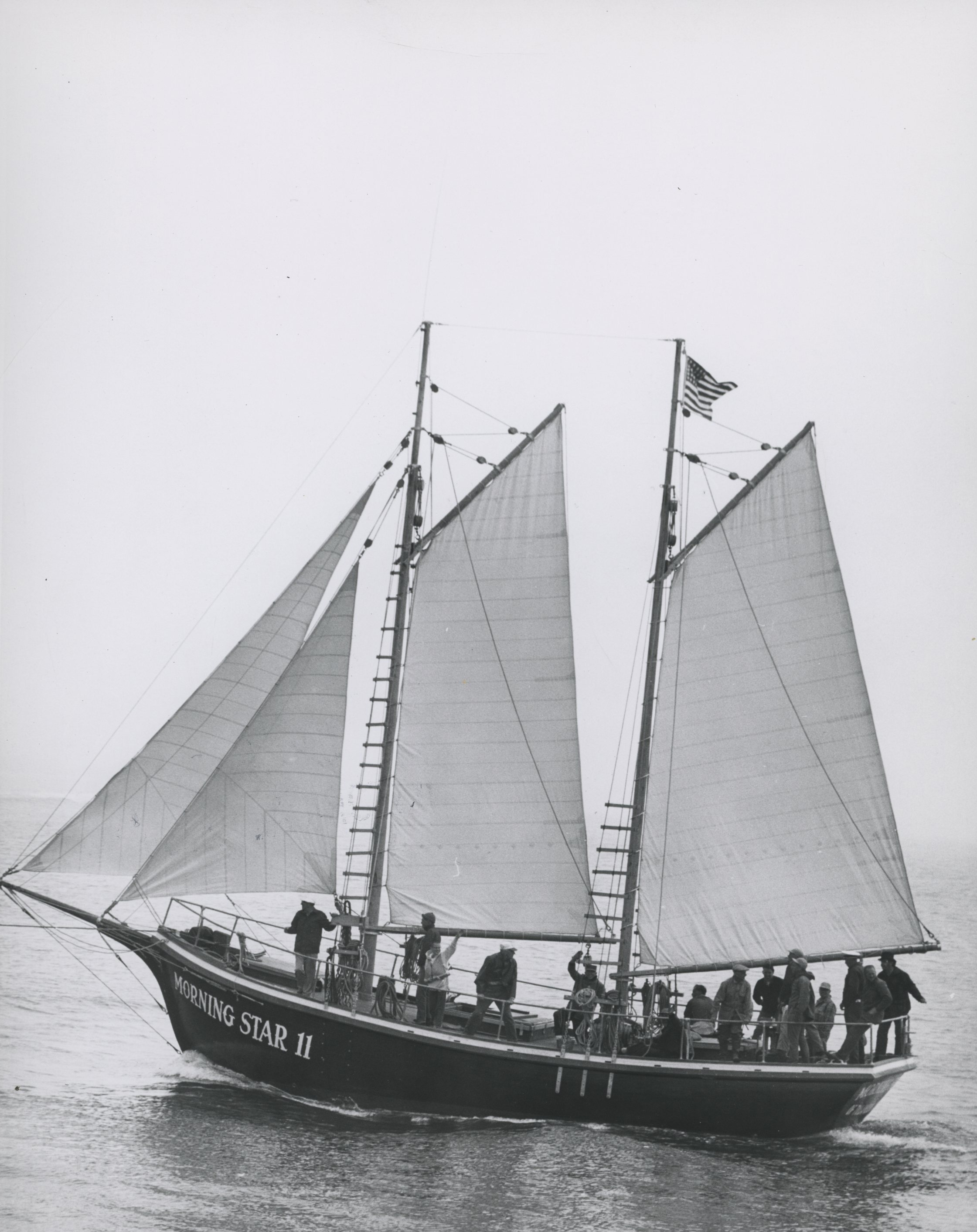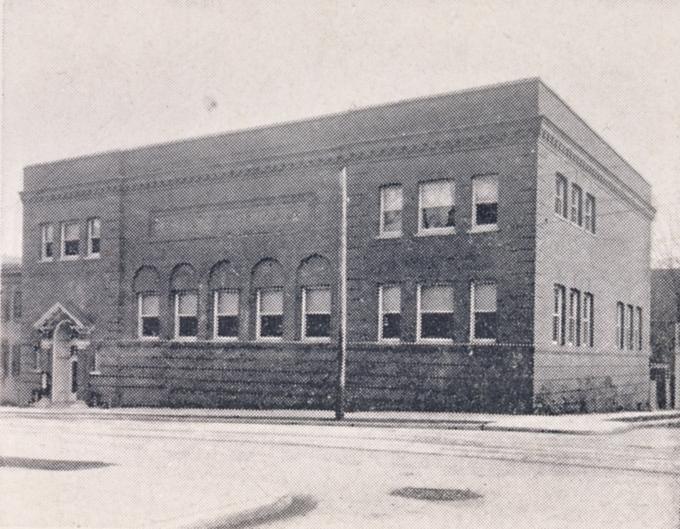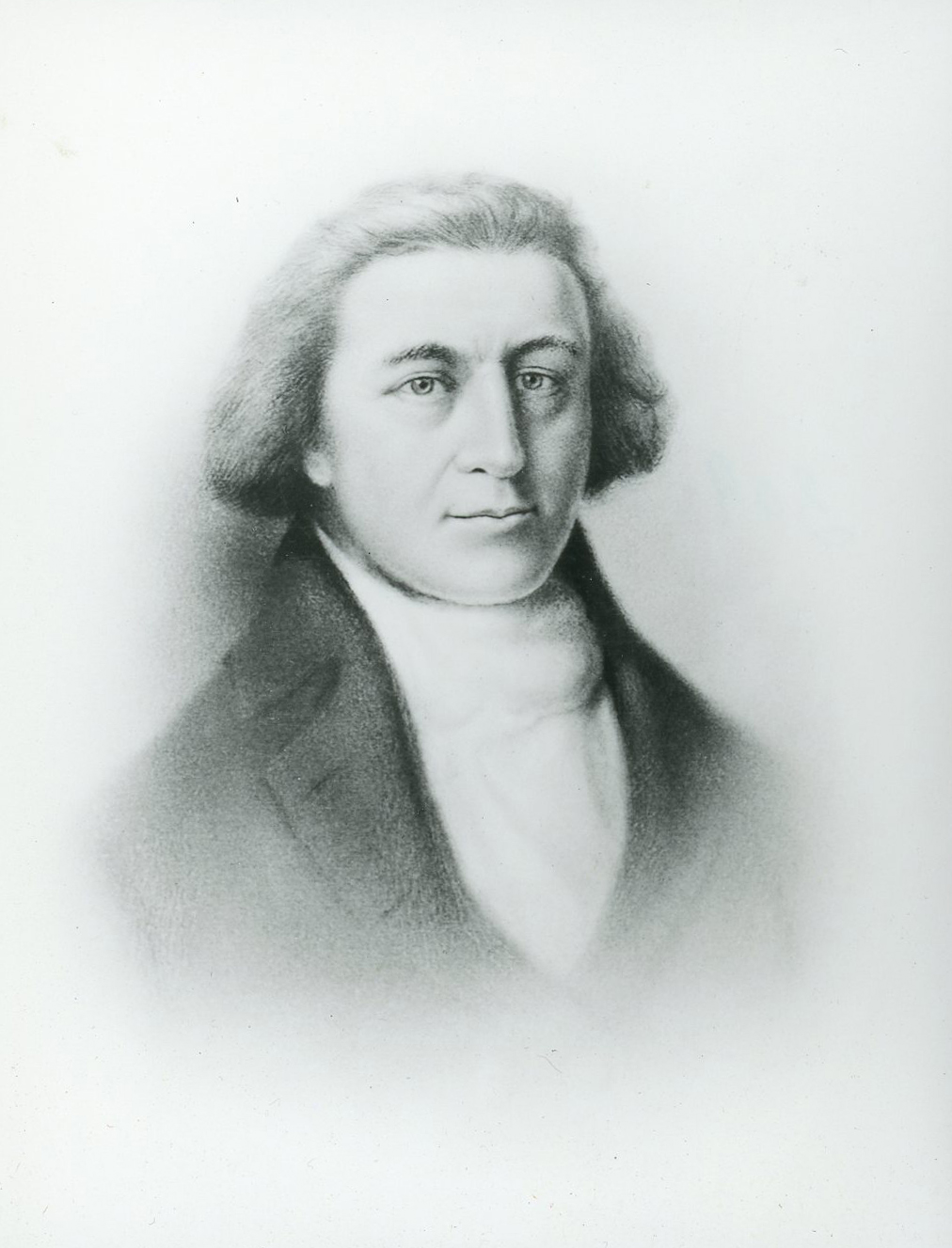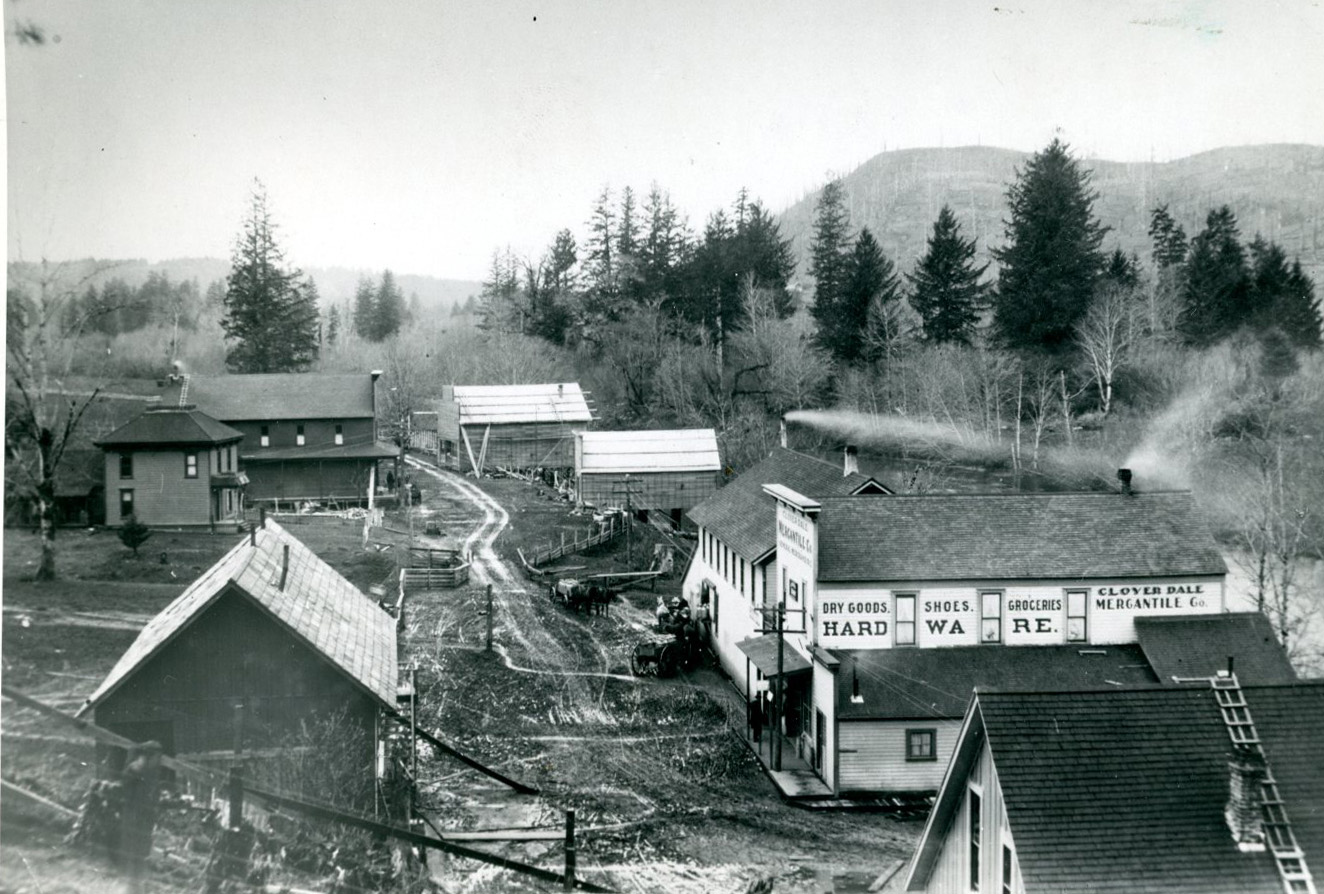Lucia Wiley was a nationally known fresco artist from Tillamook who created a number of murals in Minnesota and Illinois post offices, schools, and armories. In 1940, she won the contract to create a mural at the Tillamook Post Office (now Tillamook City Hall). Captain Gray’s First Visit to the Oregon Coast—also known as The Landing of Captain Robert Gray in 1788—depicts Gray’s first contact with Natives in present-day Oregon.
Born in Tillamook on April 14, 1906, to parents Wayne and Frances Drew Wiley, Lucia was the oldest of six children. She attended the University of Minnesota for Art Education in 1924 to 1926 before transferring to the University of Oregon to complete a bachelor’s degree in fine arts and a master's degree, which she received in 1932. Her thesis was a study of true fresco, a centuries-old technique in which color pigments are added directly to wet plaster. As part of her degree, she also created the fresco Fishing on the Columbia River (also known as Salmon Fishing in Oregon) in the foyer of the Exhibition Hall at the University of Oregon’s School of Architecture and Allied Arts.
Following some post-graduate study at the Minneapolis School of Art at the Minneapolis Museum of Art, Wiley accepted a fulltime teaching position at the school in June 1933. But the Depression caused the school to cancel her contract before school started, and for the next three years she gave fresco workshops for the Minneapolis School of Art. She also worked as a Works Progress Administration fresco artist from 1938 to 1940, mostly in Minnesota and Illinois.
In the early 1940s, the U.S. Treasury Department held a competition for fresco artists to create murals in post offices around the country. Wiley won a commission, and a group of citizens requested that her fresco be installed in the new post office being built in Tillamook. The Treasury Department agreed, and she began the tedious work of preparing the walls and installing the mural, completing it in 1943.
Wiley held art classes in her Tillamook studio until 1946, when she took a position at the Museum Art School at the Portland Art Museum (now the Pacific Northwest College of Art). During this time, she created the fresco Woman at the Well in the St. John’s Episcopal Church in Milwaukie.
It was the Tillamook Post Office mural that led to Wiley’s commission to create the Tillamook County Courthouse mural in the late 1940s. No public funds were used to create Building of the Morning Star in the courthouse entry. County commissioners and judges solicited funds from private individuals and logging companies to sponsor the fresco. The mural tells the story of the first commercial ship built in Tillamook, which supplied early white settlers with a means of selling their cheese and bringing supplies to the community. The courthouse fresco, painted in thirty-three sections, was a finalist in the Architectural League of New York’s Gold Medal Award in 1951.
By the early 1950s, Wiley was considered one of the nation’s most significant fresco artists. But in 1955, she resigned from the Portland Art Museum to become a postulate at the Episcopalian Community of the Holy Spirit at St. Hilda’s House in New York City. In an interview in 1996, she explained: “I think that painting fresco and the discipline of it, and the studies of these things...I began to want more quiet and more meditation and also, although I had this wonderful job at the museum, it was just a fine job. I had time to do my own painting all on the side....And good people, and good everything about it. And I had the Episcopal Church there, and I had a lovely home I had bought, but this wasn't enough...there was something more that I was hungry for, and it just grew about gradually.”
Sister Lucia soon became the supervising art teacher at St. Hilda’s, where she also taught math, English, social studies, and religion in the Community’s two schools. In 1957, she illustrated Our Prayers and Praises in the Book of Common Prayer. She became Sister Warden of Associates, serving as an adviser to postulates, novitiates, and ordinates of the Community of the Holy Spirit. In this capacity, Sister Lucia presented training and spiritual direction in the United States, Canada, and Panama. She died in Harlem in New York City on August 20, 1998.
-
![]()
Lucia Wiley.
Courtesy Wiley-Steinbach Family
Related Entries
-
![Constance Fowler (1907-1996)]()
Constance Fowler (1907-1996)
Constance Fowler was a painter, printmaker, author, and educator during…
-
![Martina Gangle Curl (1906 - 1994)]()
Martina Gangle Curl (1906 - 1994)
Martina Gangle Curl was a painter, printmaker, and woodcarver who creat…
-
![Morning Star (ship)]()
Morning Star (ship)
When commercial traders refused to stop in Tillamook in the mid-ninetee…
-
![Pacific Northwest College of Art]()
Pacific Northwest College of Art
Pacific Northwest College of Art (PNCA), founded in 1909 by the Portlan…
-
![Portland Art Museum School]()
Portland Art Museum School
In October 1909, the Portland Art Association (PAA) opened its school, …
-
![Rachael Griffin (1906-1983)]()
Rachael Griffin (1906-1983)
Rachael Griffin, educator and curator, is recognized for encouraging lo…
-
![Robert Gray (1755–1806)]()
Robert Gray (1755–1806)
On May 11, 1792, Robert Gray, the first American to circumnavigate the …
-
![Tillamook]()
Tillamook
Tillamook, the county seat of Tillamook County and its largest city, is…
Map This on the Oregon History WayFinder
The Oregon History Wayfinder is an interactive map that identifies significant places, people, and events in Oregon history.
Further Reading
Allen, Ginny, and Jody Klevit. Oregon Painters the First Hundred Years 1859-1959. Portland: Oregon Historical Society Press, 1999.
Thiele, Jennifer. Art with Spirit. Tillamook: TCPM Publishing, 2018.
Lucia Wiley Family Files Collection. Tillamook County Pioneer Museum, Tillamook, Oregon.
A Life in Art and Spirituality. http://muralist.org



